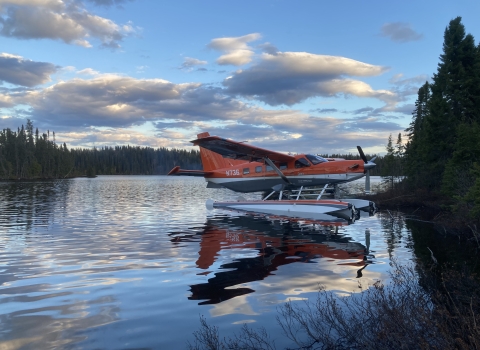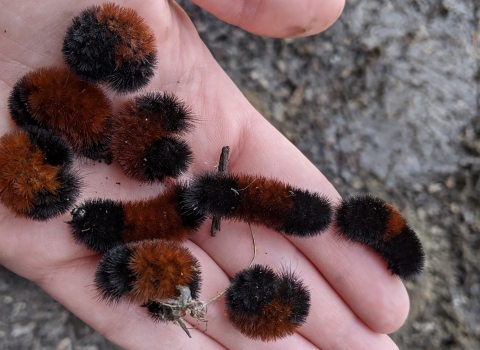“Good morning La Ronge radio, Kodiak November 758 is currently 10 miles to the south of the zone looking for the numbers.”
“Kodiak November 758, winds are one nine zero at five and altimeter is three zero zero four…is that you Walt?”
After three years of being away from my temporary spring-time home this was the common theme underlying all of the initial conversations arriving in each town. It was great to be welcomed back to the north, where the folks are as sincere and genuine as the crystal-clear waters that feed the parkland and boreal waterfowl habitats.
My observer, wildlife biologist Chris Cain, and I departed Oregon on 15 May and had an uneventful flight to Regina, Saskatchewan. Chris has flown dozens of winter surveys with me over the last few years in the Klamath Basin but had yet to fly a breeding survey, so we spent a day on the prairies looking at ducks from the air to learn how to identify and call social groupings. Within a day we were headed farther north, repositioning to Saskatoon.
We started the survey in earnest in the northern parklands near Prince Albert before transitioning east to the Saskatchewan River Delta along the Saskatchewan and Manitoba border. During this part of the survey, it is not uncommon to see lesser snow geese migrating north through this area but there seemed to be a few more around than usual, most likely delayed by the colder-than-normal winter and spring.
Picking our way farther north after some weather delays left us in northern Saskatchewan about a week later. Some of my favorite transects are here because we begin to regularly observe sea ducks and cross the Athabasca sand dunes. By now, the flying and survey felt like I had not been away for three years.
A persistent low-pressure area parked itself over our survey area in northern Manitoba, feeding wind and rain bands for several days. With only a handful of days left to fly the weather system was stretching the trip. Hourly weather checks showed the same results of low clouds and visibility. Finally, the unfavorable weather nudged enough east to allow us to get going again, and we worked our way to within about 100 miles of Churchill, Manitoba to finish up the first week of June.
Everywhere the locals we visited with said that the winter was a rare combination of very cold temperatures and lots of snow. The wetland and beaver pond water levels seemed to benefit from this as they appeared higher than I recalled. The usual boreal duck species were around, and I hesitate to guess but numbers seemed slightly lower for some species.
Regardless, the habitat has been recharged with moisture as has my soul by my Canadian friends. With the last takeoff from each airport on the survey, we wished the radio operator a great summer and vowed to return next spring with the ducks.




